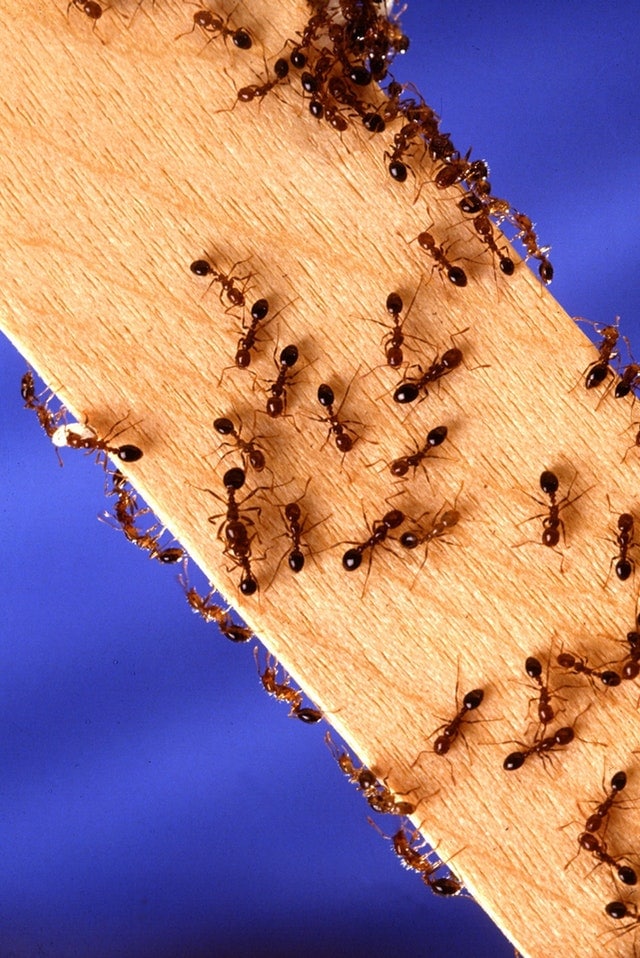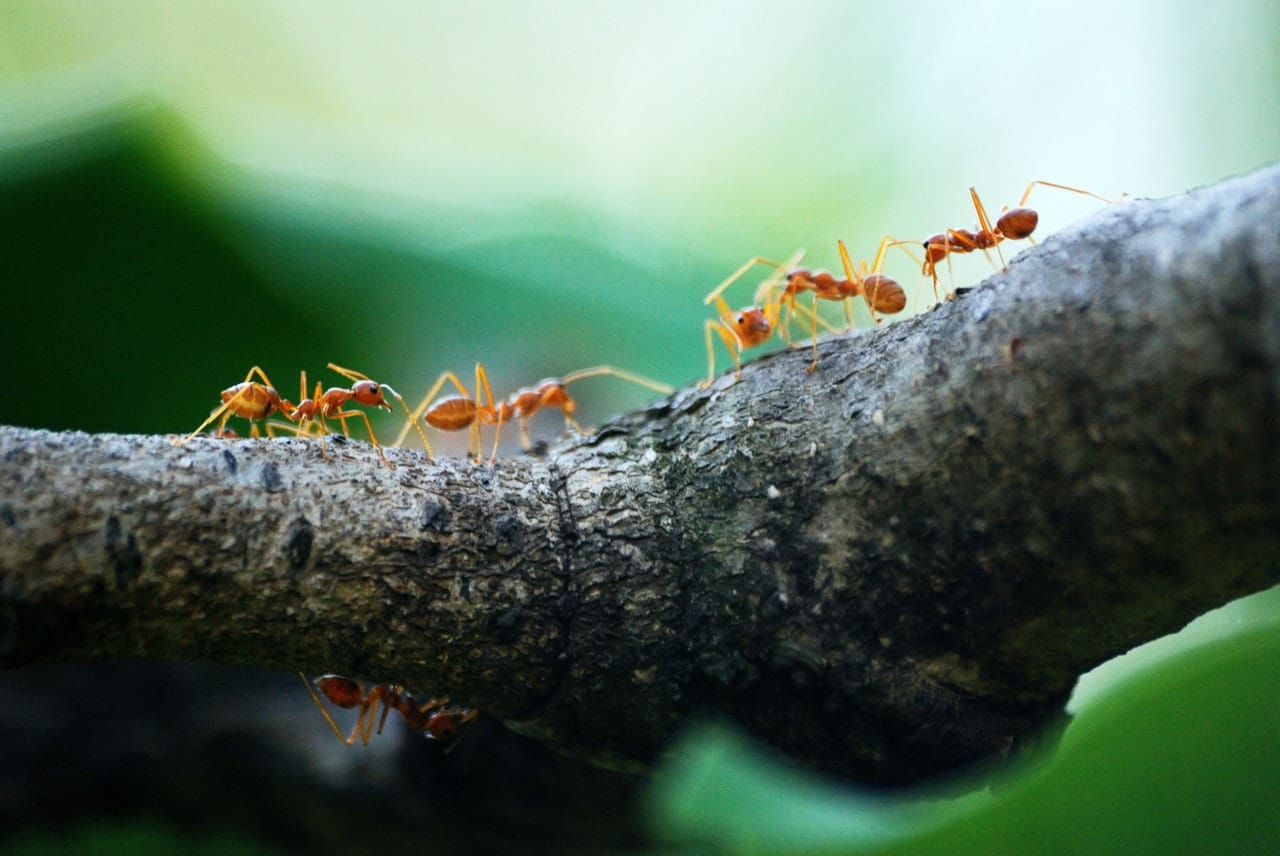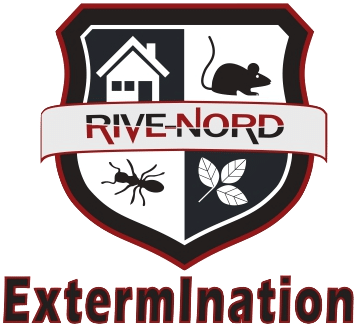
Carpenter ants
Carpenter ants are usually black. They are the largest ants observed and they measure up to 8 mm long. Also called the black carpenter ant, this species normally lives in large colonies in damp or decaying wood outside or – unfortunately – inside your home.
Outdoors, ants build their nests in tree stumps, piles of firewood, or decaying fences or deck structures. Inside the house, they are attracted to pieces of wood such as beams, joists and structural lumber. A squad of carpenter ants can easily cause serious structural damage to a home.
Repair the nest
Preventive measures against carpenter ants
Several preventive measures can keep ants away from your home.
Outside:
Remove any damp or rotting wood around the house.
Keep firewood out of the house.
Cut tree branches that touch the house and check for wires (such as electrical wires) or clotheslines that may serve as pathways for ants.
Install mosquito nets at every opening leading to the outside of the house.
Seal all cracks and crevices.
Inside:
Store food in sealed containers.
Wash floors and kitchen counters frequently.
Use an outdoor trash can for household waste.
Extermination of carpenter ants
Sometimes the problem of carpenter ants requires extermination, which involves the destruction of the main nest. Although it is often necessary to call in a pest control specialist, you can attempt to attack the anthill yourself. Here’s how you can do it.
For outdoor nests:
Repeated flooding of the nest with boiling or soapy water.
Sprinkle with red pepper, eggshell, bone meal, wood ash or diatomaceous earth, a low-impact powdered pesticide.
As a last resort, apply an approved insecticide.
For indoor nests:
Use of liquid or powdered borax bait.
Spreading homemade bait near the nest and other places where ants are found, consisting of equal amounts of icing sugar and borax powder. But beware: borax is toxic to children and pets!

Field ants or pavement ants
Field or pavement ants are brown or black and small in size. They are constantly on the lookout for food and proliferate in sandy areas, usually nesting outside near the foundations of houses, in their cracks or in those of cobblestones or areas covered with asphalt. Small sand craters formed by the digging of burrows often indicate their presence.
Preventive measures against pavement ants
A few minor measures can prevent ants from taking over your home.
Outside:
Seal cracks in foundations and exterior coverings, including door and window surrounds.
Inside:
Clean food preparation and consumption areas daily.
Regularly transfer table scraps to outdoor bins.
Store unrefrigerated foods in tightly sealed containers.
Carry out the extermination
Traps or baits sold at hardware stores and placed in areas most prone to ants are an effective way to control field ants. They can also be dislodged by pouring boiling or soapy water over their nest or by spreading red pepper, eggshell, bone meal or talcum powder, or diatomaceous earth, a pesticide low impact powder.
Please note that the use of approved pesticides should be considered a last resort. It is essential to read the manufacturer’s instructions carefully and follow them exactly.
Depending on the degree of infestation, a pest control specialist may be required.

